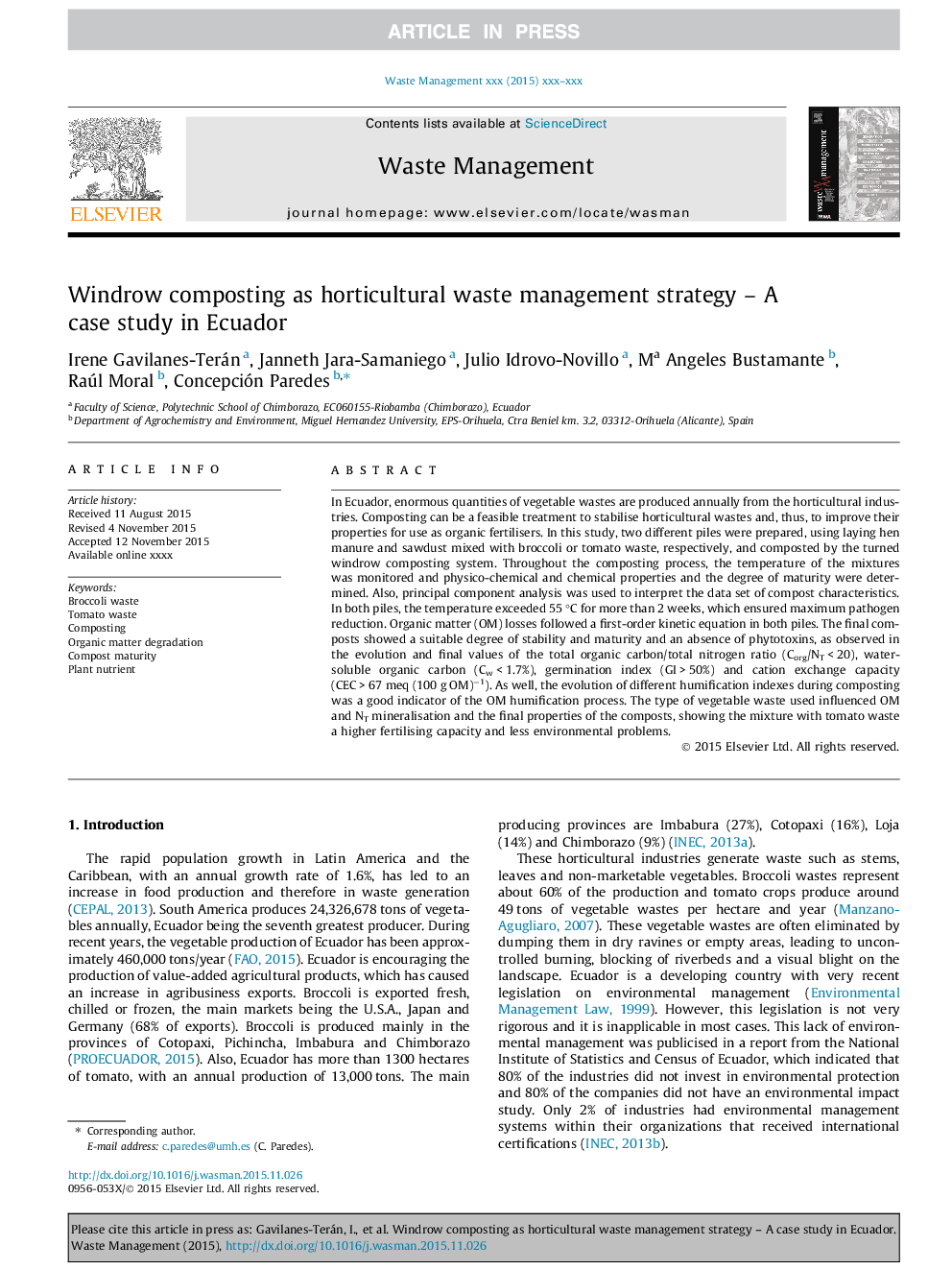| Article ID | Journal | Published Year | Pages | File Type |
|---|---|---|---|---|
| 6354085 | Waste Management | 2016 | 8 Pages |
Abstract
In Ecuador, enormous quantities of vegetable wastes are produced annually from the horticultural industries. Composting can be a feasible treatment to stabilise horticultural wastes and, thus, to improve their properties for use as organic fertilisers. In this study, two different piles were prepared, using laying hen manure and sawdust mixed with broccoli or tomato waste, respectively, and composted by the turned windrow composting system. Throughout the composting process, the temperature of the mixtures was monitored and physico-chemical and chemical properties and the degree of maturity were determined. Also, principal component analysis was used to interpret the data set of compost characteristics. In both piles, the temperature exceeded 55 °C for more than 2 weeks, which ensured maximum pathogen reduction. Organic matter (OM) losses followed a first-order kinetic equation in both piles. The final composts showed a suitable degree of stability and maturity and an absence of phytotoxins, as observed in the evolution and final values of the total organic carbon/total nitrogen ratio (Corg/NT < 20), water-soluble organic carbon (Cw < 1.7%), germination index (GI > 50%) and cation exchange capacity (CEC > 67 meq (100 g OM)â1). As well, the evolution of different humification indexes during composting was a good indicator of the OM humification process. The type of vegetable waste used influenced OM and NT mineralisation and the final properties of the composts, showing the mixture with tomato waste a higher fertilising capacity and less environmental problems.
Related Topics
Physical Sciences and Engineering
Earth and Planetary Sciences
Geotechnical Engineering and Engineering Geology
Authors
Irene Gavilanes-Terán, Janneth Jara-Samaniego, Julio Idrovo-Novillo, Ma Angeles Bustamante, Raúl Moral, Concepción Paredes,
